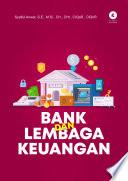
Profiling the Islamic Civilization
A History of the Legislative, Judicial, & Executive Branches
While Teaching a course on Human Rights Laws and Islam, some of my students approached me asking for some short read on Islamic law and Islamic civilization. Considering the topic of the course, it was hard finding a book that is small yet relevant to the issues discussed in class. Then I found this manuscript sitting on the shelf for years. I offered it to couple students who read it and recommended that I make available in some form, as they have learned from it quite a lot in spite of the highly technical orientation of the materials contained therein. I spent few days reviewing it only to discover that Professor Khallaf did indeed offer quite an original analysis and perspective on a number of issues that are relevant today. I then decided to put this document in the public domain, hoping that students and scholars alike find it of use.
- ISBN 13 : 0595201970
- ISBN 10 : 9780595201976
- Judul : Profiling the Islamic Civilization
- Sub Judul : A History of the Legislative, Judicial, & Executive Branches
- Pengarang : Ahmed E. Souaiaia,
- Kategori : History
- Penerbit : iUniverse
- Bahasa : en
- Tahun : 2001
- Halaman : 158
- Google Book : http://books.google.co.id/books?id=tPVaSXfGGoEC&dq=intitle:History+Of+Islamic++Civilization&hl=&source=gbs_api
-
Ketersediaan :
While Teaching a course on Human Rights Laws and Islam, some of my students approached me asking for some short read on Islamic law and Islamic civilization.









